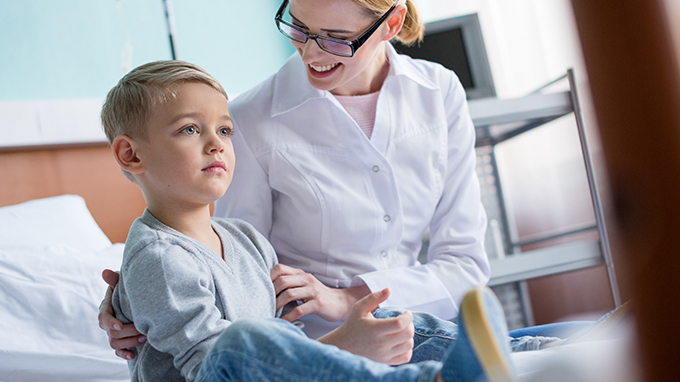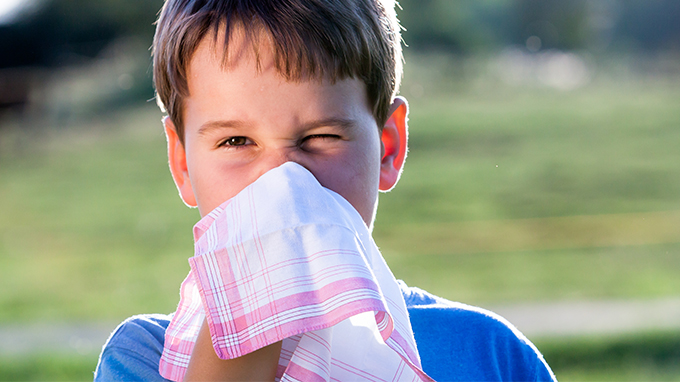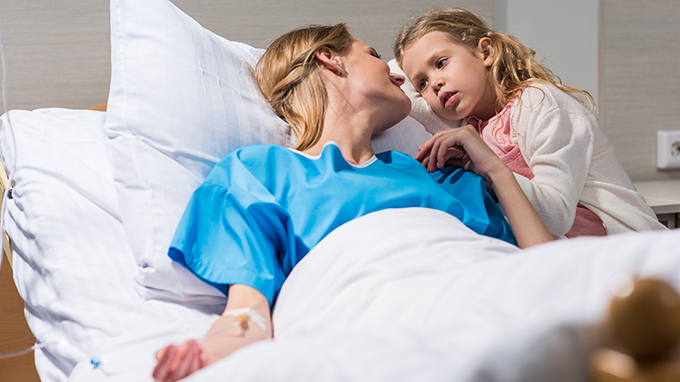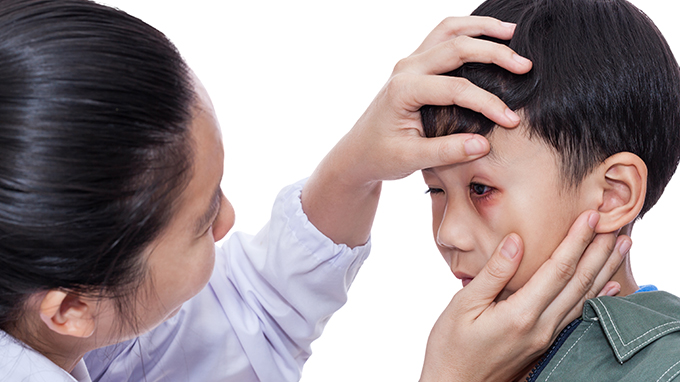Infectious diseases of children common in spring
Spring is a period of frequent confluence of cold and warm air. Due to the poor resistance of children, it is very easy to get sick in cold and hot weather. Parents learn to understand these diseases and master the basic common sense to achieve "early "Prevention, early detection, early treatment" reduces the incidence and complications.

Influenza: Drink plenty of water 2. Get more rest
Symptoms: From infection to symptoms, the incubation period can be several hours to 2 days. The vast majority of children have a sudden onset of symptoms such as chills and chills, followed by fever, and the body temperature rises above 39°C for 3 to 5 days, accompanied by headache, body aches, fatigue, dry throat, and sore throat , Cough, sputum, runny nose and other upper respiratory tract disease symptoms.
Treatment: There is no specific antiviral drug in treatment, mainly to relieve symptoms. For example, when the symptoms of runny nose and sneezing are serious at the beginning, you can take some medicines for colds; when the symptoms of cough and sputum are serious, you can use expectorant and cough medicines; if you have a high fever, you can take some antipyretics.
Home care:
•Pay attention to supplementing water and rest; pay attention to balanced nutrition and easy digestion in the diet. The early stage of the disease is mainly light, and usually recovers within a week.
•If you find that your child continues to have high fever or the body temperature rises again after fever, and there is a cough, wheezing, whitish complexion or bluish purple, there may be complicated laryngitis, tracheobronchitis and pneumonia, Seek medical attention immediately.
epidemic meningococcal meningitis: frequent ventilation
symptoms: referred to as "flowing brain". It is highly contagious, and the prevalence is particularly high under 6 years old. Meningococcal seasonal is obvious, the onset of climax from February to April. The incubation period is mostly 2 to 3 days, up to 1 week. It is characterized by an acute onset, sudden fever, and severe symptoms such as severe headache, nausea and vomiting, skin petechiae, convulsions, and stiff neck. In severe cases, it may die within a few days, or leave sequelae such as cerebral palsy and hydrocephalus.
Treatment: Meningococcus is quite sensitive to sulfonamides and penicillins. After anti-infection and symptomatic treatment, it can gradually recover after 1 week.
Home care:
•Diet should be given to digestible liquid or semi-liquid food, such as noodles, rice soup, etc., to ensure sufficient water, especially for children taking sulfa drugs Drink plenty of water.
•Ventilate frequently to ensure that the air in the room is fresh.
Scarlet fever: bed rest is the most important
symptoms: This disease is an acute eruptive infectious disease that occurs frequently in the late winter and early spring. It can occur at any age, and it ranges from 2 to 10 The highest age children.
(1) Light type: low fever, pharyngitis, short rash period, few and rare rashes, often healed without attention, often after the rash is desquamated or complicated with nephritis Scarlet fever;
(2) Poisoning type: The disease develops rapidly, sudden high fever, and the symptoms of systemic poisoning are obvious. There are often convulsions, coma, vomiting, irritability, and sometimes shock may occur quickly. The rash quickly spreads throughout the body, and there are often bleeding points.
(3) Sepsis type: The symptoms are more severe than the poisoning type. The child has symptoms such as high fever, irritability, and aggravation of angina, but such children are now very rare.
Treatment: Children should rest in bed and pay attention to strengthening diet and nutrition to add water in time. Children with severe symptoms can be infused. Penicillin is the first choice for scarlet fever.
Home care:
•The living room should pay attention to the sunshine and fresh air, and keep quiet.
•Sick children are better off in bed, eating fluid and soft food, and drinking more water.
•Pay attention to oral hygiene, gargle after each meal.
•During the rash, strengthen skin care, such as cutting the nails of the child to prevent the child from accidentally scratching the skin and causing skin infections. You can apply syrup to relieve itching.
Measles: Beware of pneumonia and other complications
Symptoms: It is an acute eruptive respiratory infectious disease transmitted by the measles virus through the respiratory tract, which is more common in winter and spring. In the early stage of the disease, the symptoms were like a cold, fever, body temperature up to 40 ℃, with symptoms such as runny nose, cough, conjunctival hyperemia, photophobia and so on. Two to three days after the onset, small white spots may appear on the mucous membranes on both sides of the oral cavity, and there are red spots around the rash. The rash begins after 4 to 5 days. The rash first appears behind the ear and gradually develops from the hairline and forehead to the face and chest Back, limbs, hands and feet. Three to four days after the rash, the rash begins to subside, and the entire course of disease is about 10 days. Once the measles is cured, you can get lifelong immunity.
Treatment: Children with uncomplicated measles do not need to be hospitalized, but because the children are highly infectious within 5 days of the rash, they must be strictly isolated. If the child has a high fever, coughing, and shortness of breath, pneumonia may occur. If the child''s voice is hoarse during the rash, drinking water and choking, this is a precursor to complicated laryngitis, and these complications must be timely See a doctor.
Home care:
•Keep indoor air circulation and pay attention to keeping children warm.
•During drinking fever, drink plenty of water. This will make the rash easier to penetrate and facilitate the removal of toxins from the body.
•Give easily digestible and nutritious food, pay special attention to vitamin A supplements.
•Fever helps the rash to pass through, so a small amount of antipyretic drugs can be used for high fever during the rash, but the body temperature should not be too low, and it should be maintained at about 38℃.
•In addition to eating less greasy food during the recovery period, there is no need to avoid taboos, soak the towel with warm water every day to wipe off the nose and eyes.
Mumps: Eat less acidic foods
Symptoms: Commonly known as "chill mumps", caused by mumps virus, mostly in winter and spring. The disease is mainly spread by droplets. It can also be caused by contact with food, tableware, toys, etc. used by patients. Children usually get lifelong immunity after being ill once. After infection with mumps, symptoms of fever, body aches, runny nose, and swelling of the pharynx appear first. The parotid gland is swollen after 1 to 2 days. Generally, one side of the parotid gland is swollen and the other side is swollen after 1 to 2 days. The swelling of the parotid gland is centered on the earlobe and is obvious under the ear. The swelling is not red and shiny, and the mouth is open and painful when touching. The fever subsides after 3 to 5 days, and the parotid gland swelling subsides after about 1 to 2 weeks.
Treatment: Children without complications do not need to seek medical treatment, but need to be isolated and nursing at home until the parotid gland swelling has completely resolved. If you find that your child has high fever, frequent vomiting, headache, psychiatric dysfunction, and drowsiness, you must be alert to concurrent meningoencephalitis and need to be sent to the hospital for treatment in a timely manner.
Home care:
•Bed in bed, give a digestible liquid or semi-liquid diet and drink plenty of water.
•Do not give children acidic food because acidic food can increase pain.
•After squeezing dry water with a cold towel, gently stick it to the swollen area to reduce pain and swelling.
Pertussis: Take cough medicine with caution
Symptoms: Very contagious, and long. There is paroxysmal spastic cough during the onset, which is accompanied by deep, long chirping breathing (also known as chick tailing) or vomiting. You can get lifelong immunity after recovering from illness.
Treatment: Antibiotics can be used to relieve symptoms during the initial cough period, but antibiotics cannot shorten the course of the disease during the spastic cough period.
Home care:
•The room should be quiet, fresh air, plenty of sunlight, avoid cold.
• Eat less and eat more meals, choose to be easy to digest and absorb.
•Children’s clothes and quilts should be washed and changed frequently, and if necessary, disinfect the air with ultraviolet light.
•Do not give your child cough medicine casually. It is dangerous to force a cough without expectoration.
Rubella: pay attention to observation and seek medical attention in time
symptoms: mostly caused by direct contact with the child. After the child was infected, it took 10-21 days to develop the disease, and began to have symptoms such as cough, runny nose, and fever. The body temperature was generally between 38-39°C, and a rash appeared on the day of fever or the next day. The rash color often spreads throughout the body within a day, starting from the face, with fewer limbs. Normally, the fever will disappear when the rash appears. The number of rashes did not significantly flake or leave pigmentation, usually the body temperature was not high, and the child was in good spirits. The incidence of rubella is relatively mild, with a total course of 2-3 days. Having rubella can last long.
Treatment: No special treatment is required. When the body temperature is high, you need to rest in bed and drink plenty of water. A small number of patients may be complicated by otitis media, pharyngitis, bronchitis, pneumonia, tonsillitis, arthritis or myocarditis, encephalitis, and hepatitis.
Home care:
•You can eat porridge or semi-liquid diet.
•If you have a sore throat, you can gargle with warm saline. Those who have high fever and headaches can take antipyretics.
Related Articles

- What are the symptoms of Crohn's disease?
- 2020-12-17

- child
- The night shift on this day, I almost "collapse", explaining again and again, repeating it over and over again, as if rewinding the tape. Emergency services at night are rarely so b
- 2020-08-02

- Pneumonia prevention, attention to detail
- Speaking of the prevention of childhood diseases, parents may first think of respiratory infectious diseases such as flu, hand, foot and mouth disease, mumps, etc., and I will not talk abou
- 2020-08-02

- Older children, don’t get pneumonia easily
- Recently, our respiratory group has received a lot of "bronchial pneumonia" children, a considerable part of them are not real pneumonia, because they have experienced many wheezing
- 2020-08-01

- Recommendations for clinical treatment of severe cases of enterovirus 71 (EV71) infection
- Hand-foot-mouth disease is an acute infectious disease caused by enterovirus. Severe cases are mostly caused by enterovirus 71 type (E V 7 1) It is caused by infections and occurs mostly i
- 2020-08-01

- Be alert when your child has a high fever and cough for more than 5 days
- Three months after I went to the clinic, I have diagnosed five children with lobar pneumonia, and the parents of two of them are friends who are studying physical, spiritual and spiritual g
- 2020-08-01
